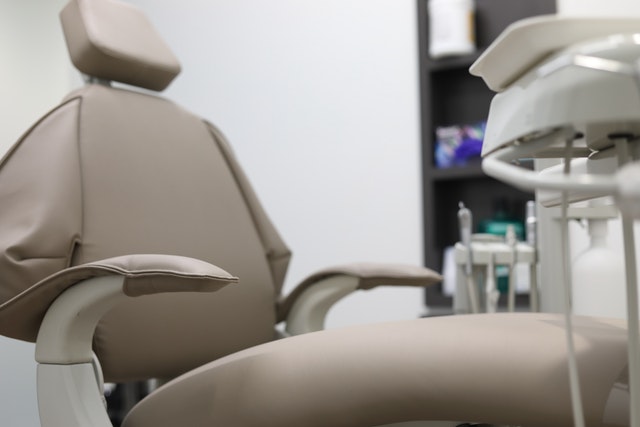Wilhelm Conrad Röntgen discovered a picture cast by a cathode ray generator that was projected well beyond the range of the cathode rays on November 8, 1895.
Röntgen discovered its medical application a week after its discovery when he took a snapshot of his wife’s hand on a photographic plate generated by unknown radiation, which he named X-rays. Her wedding band and bones were readily visible.
Dr. Otto Walkhoff took the first original dental roentgenogram from a part of a glass imaging plate in his own mouth in January 1896 for a 25-minute exposure time. Since then, dental imaging has advanced dramatically, with numerous uses in dentistry.
Intraoral and extraoral imaging techniques are divided into two categories: analogue and digital imaging, ionising and non-ionizing imaging, and two-dimensional (2-D) and three-dimensional (3-D) imaging.
Because of increased consumer knowledge and enhanced information dissemination in emerging countries, the relevance of oral care and oral care products has risen dramatically in recent years.
The primary necessity for oral health-care goods derives from the fact that the majority of oral health disorders can be prevented and/or treated with commercially available items.
Dental caries, which can lead to tooth decay, the gangrenous disease noma, which usually affects malnourished children, oral cancers, oral manifestations of the human immunodeficiency virus (HIV), cleft lip and palate, oro-dental trauma, and other periodontal diseases are among the oral conditions highlighted by the World Health Organization (WHO).
Because of the wide range of oral problems, the oral care products industry caters to both consumers and dental professionals. Products and oral care solutions are complex, and the level of skill and infrastructure required to develop them differs dramatically from one product to the next. However, due to the large number of consumers worldwide, generic items that cater to consumers outperform specialist products in terms of value.
As a result, supermarkets and convenience stores, medicine stores and pharmacies, specialty stores, and, more recently, the internet retail sector continue to be the market’s primary sales channels.


The Current State Of The Dental Care Market And Projections For The Future
The global oral care industry was valued at USD 53 billion in US dollars in 2020, and it is expected to grow to USD 96 billion by the end of 2031. It will grow at a strong compound annual growth rate (CAGR) of 5.6 percent over the next ten years, thanks to a consistent increase in sales revenue. According to Reports and Data, the dental imaging market will match the pace of oral care industry growth and reach USD 4.88 billion by 2028. Oral diseases are thought to afflict roughly 3.5 billion of the world’s 7.8 billion population.
Nearly 2.3 billion of these 3.5 billion people are projected to have caries affecting their permanent teeth, whereas over 530 million children have caries affecting their deciduous teeth. Because caries is the most preventable (and frequently the easiest to prevent) type of dental illness, the oral health-care business has a significant growth potential.
Apart from the overall growth trend and prospective prospects, important players in the oral health-care market must be mindful of market demographic transitions. Currently, the European region dominates the market.
This is consistent with other broad trends such as high levels of oral health awareness (due to high information penetration), easy access to markets with a diverse range of products (a result of high levels of development), and European consumers’ proclivity for high-end products (due to high income levels).
However, Europe is getting older. As a result, major firms in Europe are altering their product portfolios. These changes are expected to lead to sustained market expansion, with Germany, Europe’s largest market, expected to increase at a CAGR of 6% over the next ten years.
Oral care products for children overwhelmingly dominate the global market share when divided by demographics. These are worth USD 24,213.4 million, followed by products for the elderly at USD 18,091.6 million, and then products for adults worth USD 10,574.9 million. Given that Europe is the market’s largest geographical segment and confronts the prospect of a rapidly ageing population, the geriatric population products segment is expected to develop the fastest.
Furthermore, high-end productis expected to increase fast. However, this is exclusively true for the European market, and drawing a direct parallel between the European and worldwide oral health-care markets would be incorrect.
While figures for Europe provide a reasonable estimate of where the industry is headed in that region, socioeconomic trends in other parts of the world necessitate a more nuanced understanding of the oral care products market and the development of various techniques for different countries. The unequal distribution of oral health experts, particularly in poorer parts of the world, has been a major barrier for manufacturers of oral health-care products.
Low awareness and access to oral care products result from the lack of access to oral health specialists. Only 35% of people in low-income nations report a need for oral health-care services and products, compared to 60% in lower-middle income countries, 75% in upper-middle income countries, and 82 percent in high-income countries.
The Asia Pacific area, where countries in the low-income bracket are progressively advancing to the mid-income bracket, and those in the mid-income bracket are rapidly jumping into the high-income bracket, is projected to have the most potential in the future decade.
China, the world’s most populous country with 1.7 billion inhabitants, is an excellent example of the latter circumstance. Consider that in 2020, sales of middle range (between USD 20 and USD100) and low range (below USD 20) items were valued at USD 2,62,150 million and USD 2,24,946 million, respectively, in terms of influence on the oral care market. Growth in this region is expected to take a distinct path in terms of products.
Global socioeconomic shifts are projected to lead to diverse growth trajectories for oral care product producers over the next decade. Toothbrushes account for USD 35,184.3 million in global sales, with electric toothbrushes accounting for USD 31,420.8 million and manual toothbrushes accounting for USD 4,524.2 million. Pastes are worth USD 8,895.5 million, gels are worth USD 2,657.8 million, powders are for USD 1,140.9 million, and polishes are worth USD 444.9 million in toothpaste sales.
Mouthwashes are worth USD 329.1 million, with medicated mouthwashes accounting for USD 159.8 million and nonmedicated mouthwashes accounting for USD 176 million. The worth of various varieties of dental floss is USD 2,750 million. However, during the next ten years, these consumption habits are likely to change dramatically.
While changing supply, transportation, and sales patterns provide various potential obstacles for the oral care business, the growing focus on public health spending represents an opportunity in absolute terms. Consider the fact that, even in high-income countries, the cost of dental treatment remains considerable, accounting for roughly 5% of overall health spending in wealthy countries.
The United States is a classic example of a high-income country with limited access to free oral health care, with the oral care goods industry accounting for 88 percent of the overall North American regional market. Sales of oral health-care goods are predicted to increase as the government and public place a greater emphasis on health care and health-care products.
Source: https://www.reportsanddata.com/report-detail/dental-imaging-market


